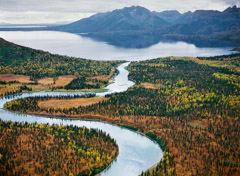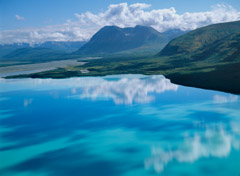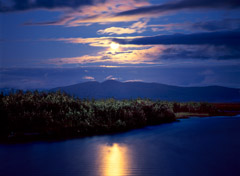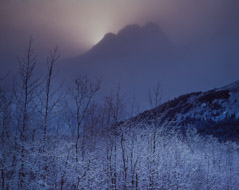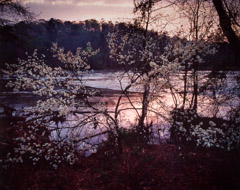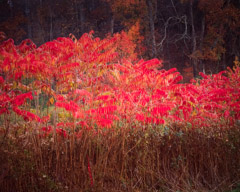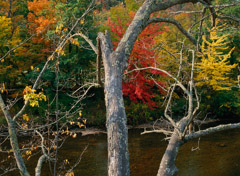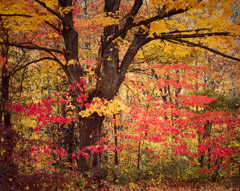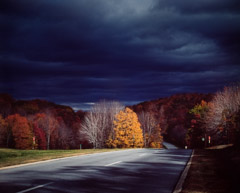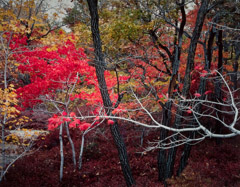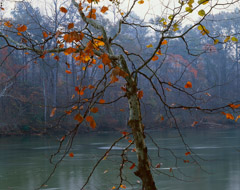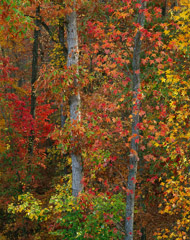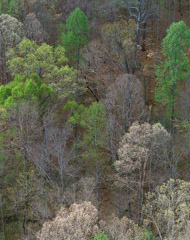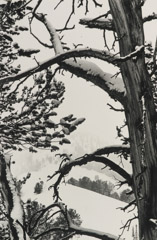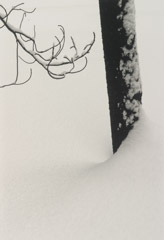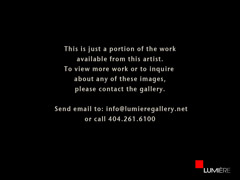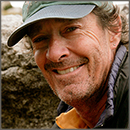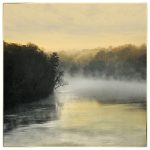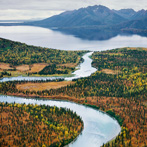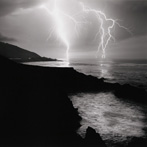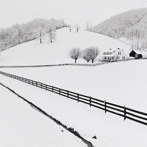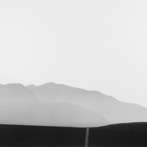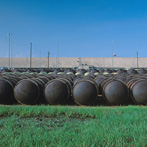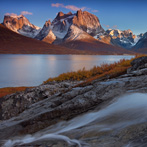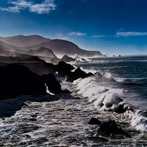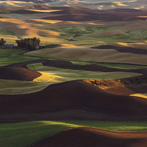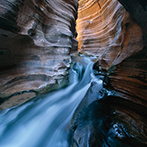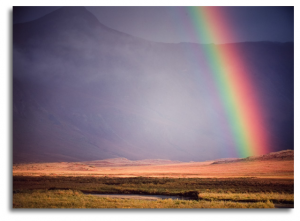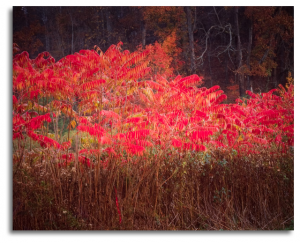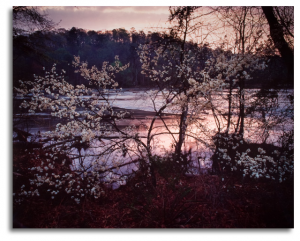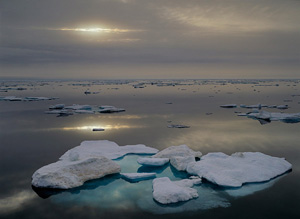Robert Glenn Ketchum
Robert Glenn Ketchum (1947) For 40 years Robert Glenn Ketchum’s imagery and books have helped to define contemporary color photography while at the same time addressing critical national environmental issues, and have made him one of the most successful artist/activists in American history. As an undergraduate at UCLA, Ketchum studied with Edmund Teske and Robert Heinecken. His first published photographs were of 1960’s era rock bands, including The Doors, Cream, Jimi Hendrix, Donovan and Traffic. Mentoring with Leland Rice during post-graduate work at California Institute of the Arts (MFA, ’74), Ketchum expanded his discipline from black & white to color and began to focus on the natural world and the legislative policies that manipulate it. What has transpired since is a notable legacy to both art and nature. Ketchum and close friend, master printer Michael Wilder, pioneered Cibachrome color printmaking in the early 1970’s.
They were also among the first contemporary photographers to explore print scale. The distinctive prints are in numerous collections including the Museum of Modern Art (NY), the National Museum of American Art (DC), the Museum of Contemporary Art, Los Angeles, and the Metropolitan Museum of Art (NY), to name a few. Significant archives (more than 100 images) have been acquired by the Amon Carter Museum (TX) and the Huntington Library (CA), and substantial bodies of work can be found at the High Museum in Atlanta, the Los Angeles County Museum of Art, the Akron Art Museum (OH), Stanford University Art Museum (CA), the Herbert F. Johnson Museum of Cornell University (NY), and the National Museum of American Art. As a curator and author, Ketchum has published with Abrams, Viking, and has 7 individual titles with Aperture. Prior to his emergence as a photographer, he was a widely recognized curator, discovering the Paul Outerbridge, Jr. estate, bringing recognition to the overlooked work of James Van Der Zee, and authoring the historical classic, American Photographers and the National Parks. Since publication of this last title, he has concentrated primarily on his own politically focused projects and publications such as The Tongass: Alaska’s Vanishing Rain Forest (Aperture, NY, 1986).
He is perhaps most recognized for his work in the Tongass, which is credited with helping to pass the Tongass Timber Reform Bill of 1990. This significant legislation established 5 major wilderness areas and simultaneously protected more than one million acres of old-growth trees in the largest temperate rainforest in the world. Ketchum’s work has been similarly integral to many other diverse environmental struggles including the development of a Hudson River Greenway from the Adirondacks to Manhattan; the enlargement of Saguaro National Park and mitigation of neighboring resort developments; the acquisition of World Biosphere status for the Tatshenshini River corridor, Canada and the U.S. (2 million acres); the defense of one of the great whale nurseries in San Ignacio Lagoon (Baja) from industrial development by Mitsubishi; creating three new state parks in California; guiding the future planning of “gateway communities” – cities and towns that lie adjacent the entrance to national parks; several scathing critiques of federal land management policies (Overlooked in America: The Success and Failure of Federal Land Management and Clearcut: The Tragedy of Industrial Forestry); popularizing the Arctic and its beauty to underscore the threat to it from global warming; and, contributing to an internet library of images and scientific information about Russia’s wild biological reserves. Most recently he has been part of the largest land conservancy negotiation in the history of California, purchasing the conservation easements to the entirety (83,000 acres) of San Simeon Ranch, the well known William Randolph Hearst estate, for which he is the exclusive photographer. American Photo magazine named Ketchum one of the 100 most important people in photography, and Audubon placed him among the 100 people “who shaped the environmental movement of the 20th Century.” Other acknowledgments suggest the breadth that the imprint of his work has had: the United Nations Outstanding Environmental Achievement Award; the Josephine and Frank Duveneck Humanitarian Award; the Robert O. Easton Award for Environmental Stewardship; the UCLA Alumni Award for Excellence in Professional Achievement; the Ansel Adams Award for Conservation Photography; and Outstanding Photographer of the Year (2001) from the North American Nature Photography Association.
Aside from his commitment to his art, Ketchum has had a lifelong dedication to public service founding Advocacy Arts Foundation and serving as board member or councilor to the Alaska Conservation Foundation, the American Land Conservancy, and the Alaska Wildlife Alliance. Previously, he was Curator of Photography for the National Park Foundation for 15 years, and was a member of the board, vice-president, and president of the formative Los Angeles Center for Photographic Studies during the 1970’s. In the fall of 2006, the Amon Carter Museum of Fort Worth, TX will display a 35-year retrospective of Ketchum’s work, comparing and contrasting his imagery and accomplishments with a large selection of photographs from the Eliot Porter Archive. An extensive publication, Regarding the Land: Robert Glenn Ketchum and the Legacy of Eliot Porter will accompany the exhibition.
The work of Robert Glenn Ketchum is featured in these exhibitions.
(Select the image to view the exhibition page)
The work of Robert Glenn Ketchum is featured in these Theme Collections.
(Select the image to view the theme page)
Cibachrome Prints: Elusive and Beautiful
Cibachrome is the Moby Dick of rare photographic printing processes. Many a Captain Ahab has gone trolling through deep waters in search of the scarce paper and chemicals that are needed to produce these sought after prints. After the chemistry needed to create Cibachrome was discontinued a few years ago, some photographers squirreled away enough supplies to last a few years in large freezers. When this hoard runs out, no new Cibachromes can be printed.READ ENTIRE ARTICLE
and sold it to International Paper in 1989.
In 1992 the product was renamed “Ilfochrome”.
American Photo Master Series: Robert Glenn Ketchum
In March of 2010 American Photo announced, Robert Glenn Ketchum was chosen as the fifth photographer to receive Master Series distinction, (link to read the entire article).
His activism has made him one of the most influential photographers of our time.
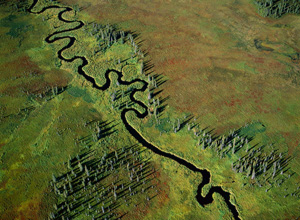 By Russell Hart
By Russell Hart
His is not a household name, even in genteel households familiar with photography’s luminaries. He wouldn’t be counted in the firmament of Avedon, Leibovitz, Cartier-Bresson or Helmut Newton, the subjects of American Photo’s prior Master Series issues. Robert Glenn Ketchum, a champion of the modern environmental movement for more than 30 years, may well be the most influential photographer you’ve never heard of.
You probably know the photographers who blazed the trail for Ketchum’s unprecedented use of photography for environmental advocacy — William Henry Jackson, Ansel Adams and Eliot Porter. Just as Jackson’s 1871 photographs of Yellowstone were the argument that convinced legislators to preserve it as America’s first national park, Ketchum’s 1980s photographs of Alaska’s threatened Tongass rainforest were instrumental in leading Congress to set aside a million of its oldgrowth acres as America’s largest national forest — all off limits to logging.
Robert Glenn Ketchum
Carter Presidential Library and Museum
Vanishing Alaska – Acclaimed environmental photographer Robert Glenn Ketchum discussed his retrospective exhibition Natures Palette at Lumière, also his exhibition featuring the work from Southwest Alaska that was on display at the Carter Library.
Vanishing Alaska - Robert Glenn Ketchum
January 24, 2008
Pace Acedemy, Atlanta Georgia
Robert Glenn Ketchum led a student workshop and lecture. Several hundred students from over 12 private and public high schools throughout the Atlanta area participated in the program.



